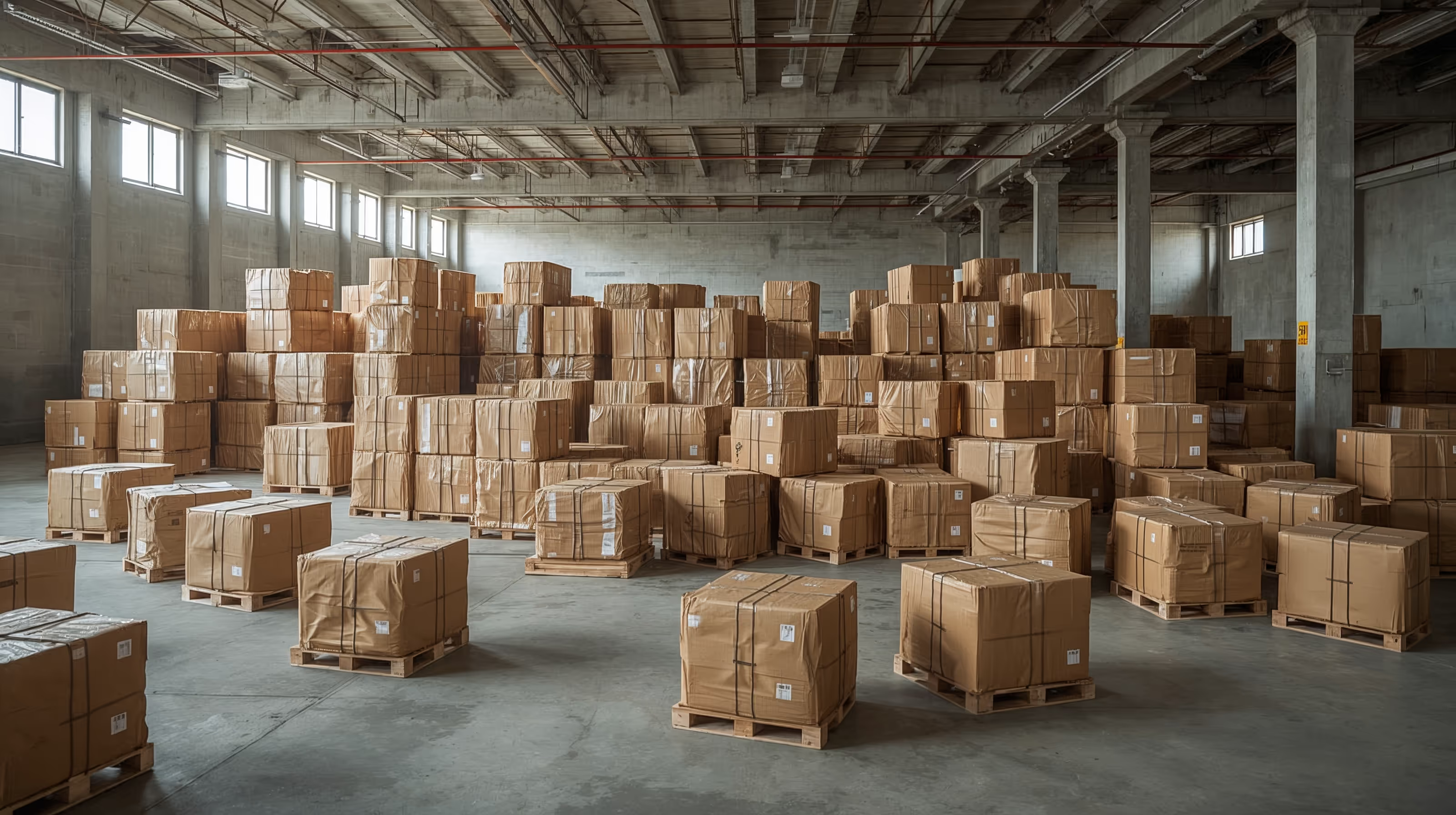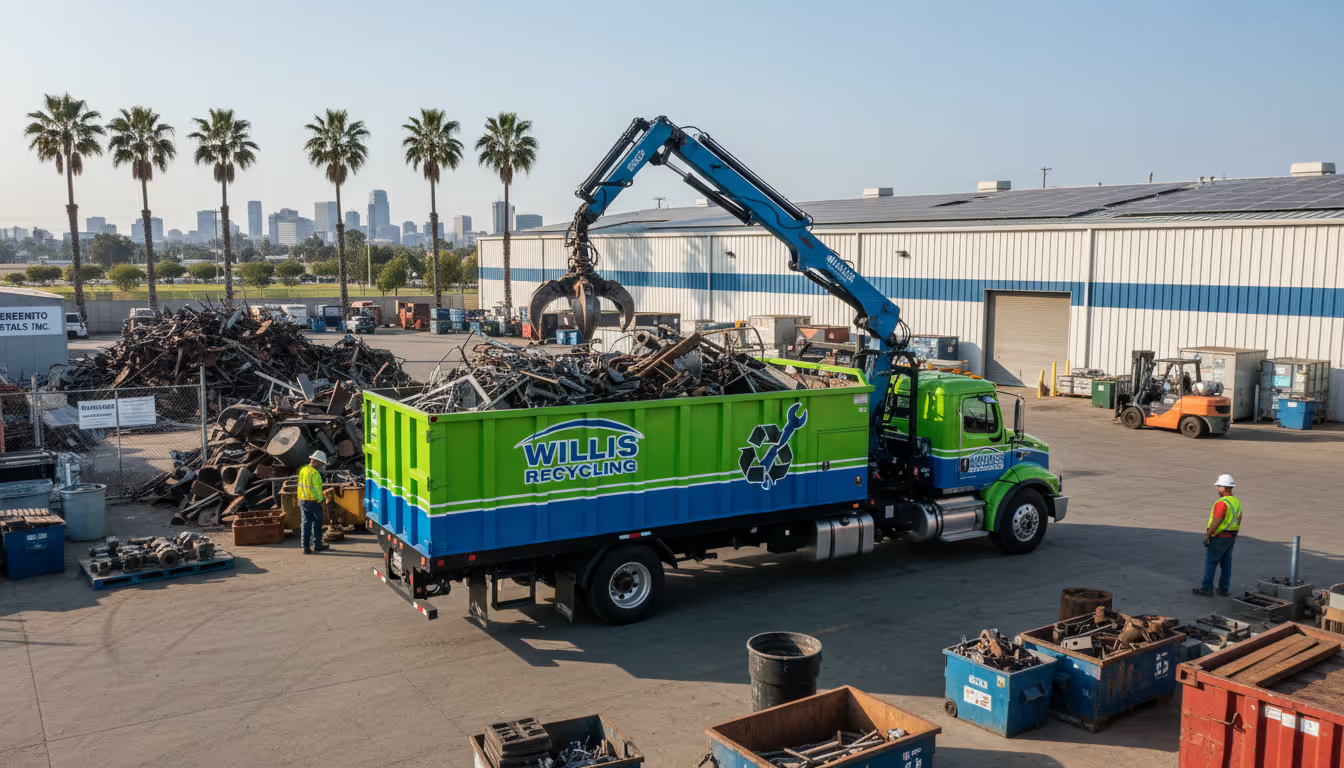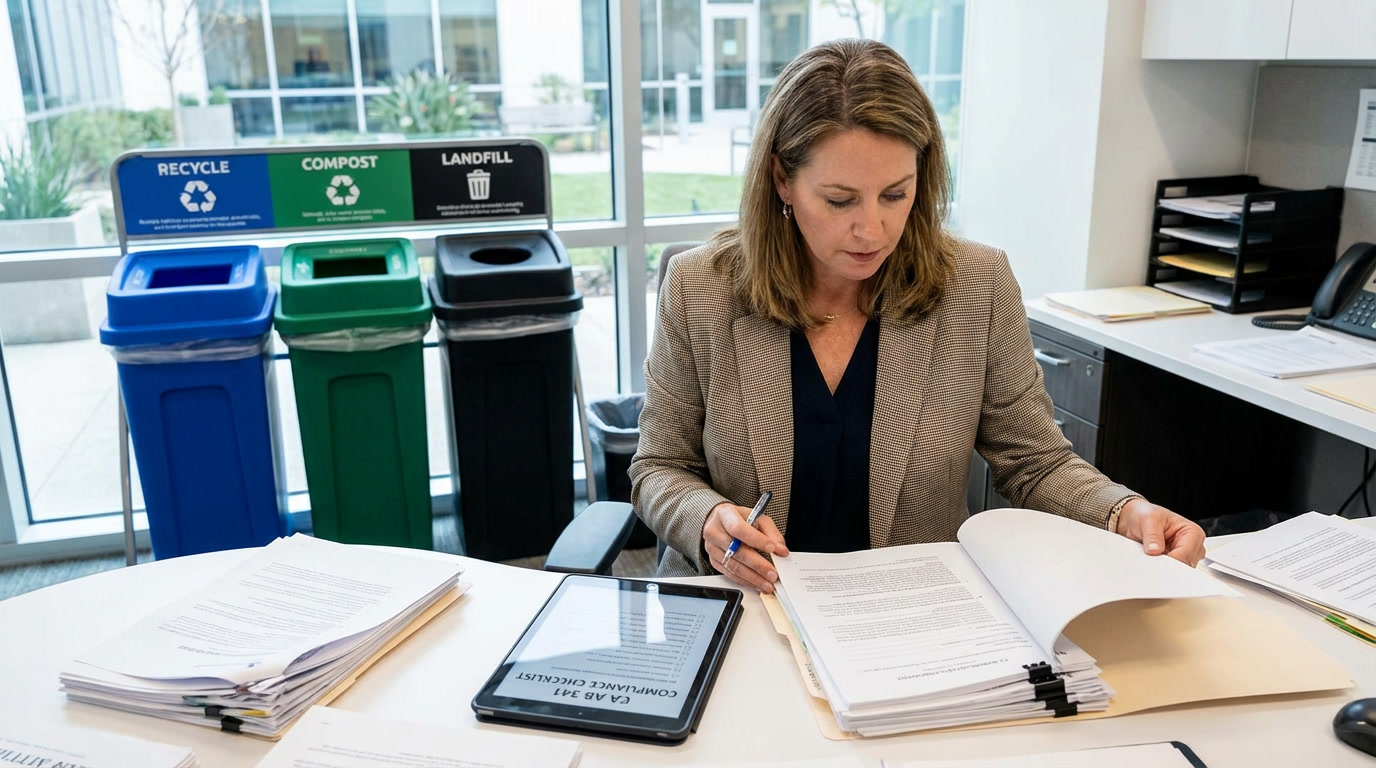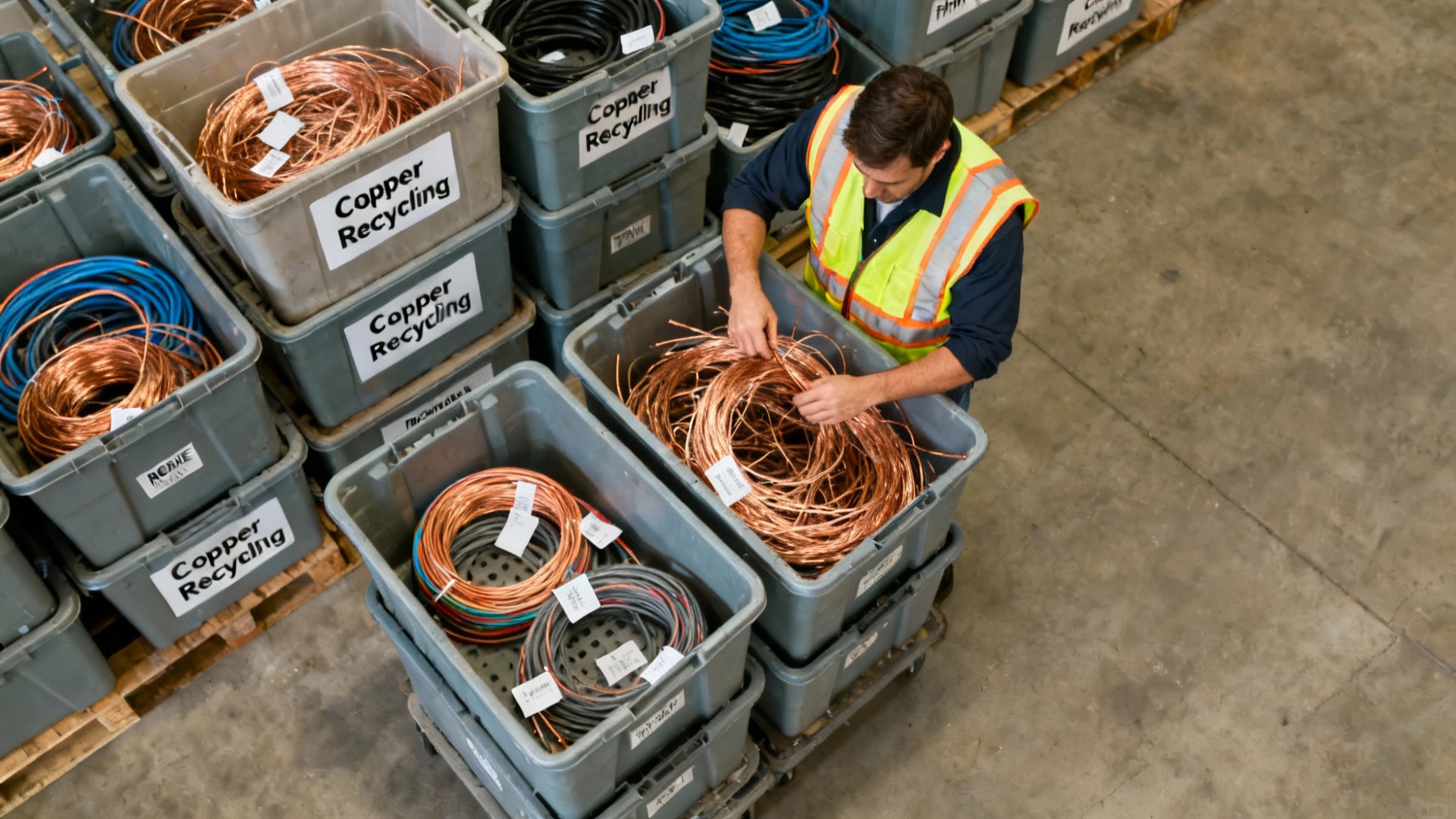Introduction
Cardboard bales turn waste into revenue for businesses. Companies earn $50-150 per ton selling baled cardboard to recyclers. A medium warehouse produces 2-3 tons monthly—that's $450 in revenue instead of disposal costs. Most businesses see returns within 45 days.
Walk behind any warehouse in Northern California. You'll see it—cardboard. Mountains of it.
Those flattened boxes aren't just taking up space. They're money sitting idle. Real money that businesses throw away every single day.
Your Cardboard Has Real Value
Let me share something surprising. Recyclers want your cardboard. They'll pay for it.
We're talking about OCC—Old Corrugated Cardboard. Clean, baled cardboard sells for $50 to $150 per ton right now [1]. The price depends on quality and market conditions, but the demand stays strong.
Do the math with me. A typical retail store produces 2-3 tons of cardboard each month. At current rates, that's $300 to $450 in revenue. Not cost savings—actual revenue.
Larger warehouses? Some generate 10+ tons monthly. That's potentially $1,500 coming in instead of going out.
The Environmental Impact Matters Too
Money talks, but the environmental story sells too. One ton of recycled cardboard saves:
17 trees from being cut down
7,000 gallons of water
Energy to power a home for six months [2]
Your customers care about this. They want to support businesses that reduce their carbon footprint. Cardboard recycling gives you both the revenue and the environmental story.
Understanding What Makes Cardboard Valuable
Not all cardboard is equal. Clean, dry cardboard brings top dollar. Wet or contaminated material loses value fast—sometimes becoming worthless.
What recyclers want:
Clean corrugated boxes
Dry material (moisture ruins everything)
Dense bales (800-1,200 pounds each)
Consistent supply
What kills value:
Water damage or mold
Food contamination
Mixed materials (plastic, styrofoam)
Loose, unbaled cardboard
The difference between good and bad preparation? It could be $100 per ton.
Making Money From Your Cardboard: A Simple Process
Step 1: Know Your Volume
Count boxes for one week. Weigh a sample if possible. Most businesses produce more cardboard than they think. Even small operations often generate 500+ pounds monthly.
Step 2: Keep It Clean
Set up a simple system:
Designate a dry storage area
Train staff to remove contaminants
Keep cardboard away from liquids
Stack neatly to save space
Step 3: Choose Your Approach
Three options work for most businesses:
Buy a baler ($3,000-$15,000) Best if you generate 5+ tons monthly. Pays for itself within 6-12 months.
Rent a baler ($200-$500/month) Perfect for testing the waters. No big upfront cost.
Use a recycler's service Some recyclers provide equipment or handle baling. Great for smaller operations.
Step 4: Set Up Regular Pickups
Consistency matters. Weekly or bi-weekly pickups work best. Regular schedules mean:
No overflow problems
Steady revenue stream
Better pricing from buyers
Less staff time managing waste
Real Questions From Real Businesses
"We're a small operation. Is it worth it?"
Yes. Businesses generating just 500 pounds monthly benefit from recycling. You might partner with neighbors to share baler costs. Or find a recycler who handles smaller volumes.
"What about pizza boxes and other cardboard types?"
Good news—most cardboard has value:
Pizza boxes (grease okay, food not okay)
Brown paper bags
Cardboard tubes and cores
Shipping inserts
Just keep them separate from regular corrugated boxes for best prices.
"How fast do we get paid?"
Most recyclers pay within 30-45 days of pickup. Some offer faster payment for regular customers. The key? Build a relationship with a reliable buyer.
"Do prices change much?"
Cardboard prices follow predictable patterns. They rise in fall (September-November) when retailers stock up for holidays. They drop in January-February after the holiday rush. Smart operators save extra capacity for high-price periods.
Common Mistakes That Cost Money
Mistake #1: Letting cardboard get wet One rainstorm can ruin a month's worth of material. Always store bales under cover.
Mistake #2: Mixing materials Keep cardboard separate from paper, plastic, and other recyclables. Mixed loads bring lower prices.
Mistake #3: Poor bale quality Loose bales break during transport. Use proper wire or strapping. Make them dense and square.
Mistake #4: No backup plan Have two buyers lined up. Markets change. Relationships matter.
The Willis Recycling Advantage
This is where local expertise helps. Willis Recycling knows the Northern California market. We've helped businesses turn cardboard waste into revenue for years.
Our process stays simple:
We evaluate your volume (free assessment)
We recommend the right approach
We handle pickup logistics
We ensure fair market pricing
Beyond cardboard, we manage your complete recycling ecosystem—metal, electronics, everything. One partner for all your recycling needs.
Making It Happen
Start small. Track your cardboard for one week. Calculate potential revenue using current rates. Consider the space you'll free up. Add the disposal costs you'll eliminate.
The numbers work. They almost always do.
A 2-3 month payback on equipment costs? That's better than most business investments. Plus, you're reducing your carbon footprint while generating revenue.
Your Next Steps
Ready to start? Three actions will get you moving:
Audit your cardboard output this week Count boxes. Estimate weight. Know your baseline.
Find dry storage space Even a small covered area works. Keep material clean and dry.
Get a fair evaluation Contact Willis Recycling at (916) 271-2691. We'll assess your volume and explain your options—no obligation.
Visit willisrecycling.com to learn more about turning your cardboard into cash.
Works Cited
[1] RecyclingMarkets.net. "OCC Market Pricing Update." January 2025. https://www.recyclingmarkets.net
[2] U.S. Environmental Protection Agency. "Paper and Paperboard: Material-Specific Data." November 2024. https://www.epa.gov/facts-and-figures-about-materials-waste-and-recycling
Frequently Asked Questions
Q: What's the minimum volume needed to start a recycling program? A: Even 500 pounds monthly makes sense. Small businesses often share equipment costs with neighbors. Many recyclers work with smaller volumes if you maintain consistency.
Q: How do I know if my cardboard is contaminated? A: Check for oil stains, food residue, or moisture. Clean cardboard feels dry and looks uniform. If you wouldn't stack it in your office, it's probably contaminated.
Q: What's better—vertical or horizontal balers? A: Vertical balers cost less ($3,000-$8,000) and fit smaller spaces. They work for most businesses. Horizontal balers ($15,000+) handle higher volumes but need more room.
Q: Can I store bales outside? A: Only with proper cover. Rain ruins cardboard value instantly. A simple tarp isn't enough—you need solid overhead protection. Indoor storage remains best.Q: Do I need special permits or licenses? A: Most businesses don't need permits for baling their own cardboard. Check local regulations if you plan to accept cardboard from other businesses. Willis Recycling can guide you through requirements.



